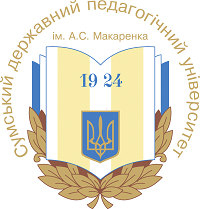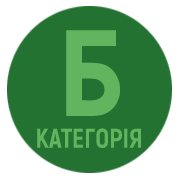WASTEWATER FROM TEXTILE PRODUCTS WASHING IMPACT ON SOIL QUALITY
DOI:
https://doi.org/10.32782/naturalspu/2024.2.6Keywords:
washing, wastewater, clothing, textile products, dyeing, dyes, phytotoxicity, soil quality.Abstract
The article is devoted to wastewater impact, that generated during textile products use by consumers, on soil quality. The textile industry significantly affects environment. Clothing manufacturers support consumer demand by constantly updating cheap low-quality products range. Low-quality textile products are potentially dangerous for both consumers and the environment. Wastewater is generated at various stages of textile products’ life cycle, also for clothing. The aim of the article is to study wastewater impact, that generated during textile products the washing in individual households on the soil quality. The impact on water resources during each stage of textile products’ life cycle is examined in this work. Special attention is paid to secondary pollution, which is formed during washing, that is important operation of wearing and using finished textile products. It has been established that neglect of technological dyeing processes leads to a low dye absorption coefficient by textile fibres. As a result, during textile products washing, the dye solution enters the city sewer, and then into water bodies. The conducted sociological survey showed a significant prevalence of textile clothes color loss during washing. If cleaning processes frequency is high, it can have a negative impact on the natural environment. The impact on the soil quality during the discharge of untreated wastewater from washing machines in individual households is especially dangerous. In addition, poorly dyed material in direct contact with the skin can have a negative impact on people health. In the experimental part, the physical and chemical properties of wastewater collected after washing denim products were researched. The study found significant pollution caused by chemicals and dyes used in the textiles production and operation. The studied water samples toxicity is finally confirmed by the soils ecotoxicity. It was researched when plants are moistened by wastewater generated during textile clothes washing and rinsing. The results analyses established an obvious depressing effect of experimental water samples on soil quality.
References
G. Peter Tessa. Global textile market set for major growth by 2030. Тextile Тoday. URL: https://www.textiletoday.com.bd/global-textile-market-set-for-major-growth-by-2030 (дата звернення 03.08.2024 р.)
Крючкова В.В. Хвмічна обробка джинсових виробів. Вплив на довкілля та здоров’ я споживачів. Проблеми надзвичайних ситуацій: матеріали науково-практичної конференції (Харків, 16 травня 2024 р.). Харків. Національний університет цивільного захисту України, 2024. С. 312–313.
Параска О.А., Подоліна К.О., Хес Л., Ковтун Х.О., Аналіз соціально-економічних, технологічних, екологічних характеристик життєвого циклу текстильних виробів. Технічні науки. Вісник Хмельницького національного університету, Вип. 2 2022 (307). Хмельницький. 2022 р. С. 153–158. DOI 10.31891/2307-5732-2022-307-2-153-158
Khan S., Malik A. Environmental and health effects of textile industry wastewater, in environmental deterioration and human health. Springer. 2014. P. 55–71.
The State of fashion 2022. BOF, McKinsey Company URL: https://www.mckinsey.com/~/media/mckinsey/industries/retail/our%20insights/state%20of%20fashion/2022/the-state-of-fashion-2022.pdf (дата звернення 05.08.2024 р.)
А New Textiles Economy: Redesigning Fashion’s Future. Ellen MacArthur Foundation. Cowes, UK, 2017. URL: https://archive.ellenmacarthurfoundation.org/assets/downloads/A-New-Textiles-Economy.pdf (дата звернення 03.08.2024 р.)
Claudio L. Waste couture: environmental impact of the clothing industry. Environ Health Perspect. 2007. Vol. 115(9). P. 448–454.
De Falco F., Gentile G., Di Pace E., Cocca M., Gelabert L., Brouta-Agnésa M., Rovira A., Escudero R., Villalba R. et al. Evaluation of microplastic release caused by textile washing processes of synthetic fabrics. Environmental Pollution. 2018. Vol. 236. P. 916–925. DOI 10.1016/j.envpol.2017.10.057
Білей-Рубан Н.В., Облещук Т.В. Вибір методів кінцевих обробок джинсових виробів та деніму у відповідності до призначення швейних виробів. Вісник Хмельницького національного університету. Хмельницький. 2009. № 2. С. 128–133.
Laundry Experience Event 2017. March 17–18 th, 2017, Helmond, Netherlands. URL: https://www.cinet-online.com/laundry-experience-event-2017/(дата звернення 10.08.2024 р.)
Про затвердження Правил користування системами централізованого комунального водопостачання та водовідведення в населених пунктах України: Наказ Міністерства з питань житлово-комунального господарства України редакція від 13.07.2021 р. URL: https://zakon.rada.gov.ua/laws/show/z0936-08#Text (дата звернення 13.08.2024 р.)
ДСТУ 7525:2014 Вода питна. Вимоги та методи контролювання якості. [Чинний від 01.02.2015]. Вид офіц. Київ : 23.10.2014Інститут колоїдної хімії та хімії води ім. А. В. Думанського НАН України (ІКХХВ НАН України).
Охорона водних ресурсів і екосистем: навч. посіб. для здобувачів вищої освіти, які навчаються за освітньо-професійною програмою «Екологія» спеціальності 101 Екологія РВО «Бакалавр» / Т. М. Дацко та ін. Дубляни: Львівський національний університет природокористування, 2024. 112 с.
ДСТУ 7369:2013 Стічні води. Вимоги до стічних вод і їхніх осадів для зрошування та удобрювання. [Чинний від 01.01.2014]. Вид офіц. Київ : 22.08.2013 Технічний комітет стандартизації «Меліорація і водне господарство» (ТК 145)
ДСТУ 8346:2015 Якість ґрунту. Методи визначення питомої електропровідності, pH і щільного залишку водної витяжки [Чинний від 01.07.2017]. Вид офіц. Київ 21.08.2015 Інститут ґрунтознавства та агрохімії ім. О.Н. Соколовського Української Академії аграрних наук.
Вакерич М.М., Швартау В.В., Гасинець Я.С., Бднарюк Р.М., Король М.В., Васильняк К.В.. Фототоксичний ефект урбаноземів ужгорода за умов інтенсивного впливу викидів автотранспорту. Фізіологіярослин та генетика. Т. 50. № 6. 2018. С. 540–547 https://doi.org/10.15407/frg2018.06.540(дата звернення 15.08.2024 р.)







